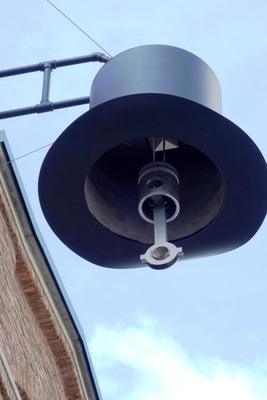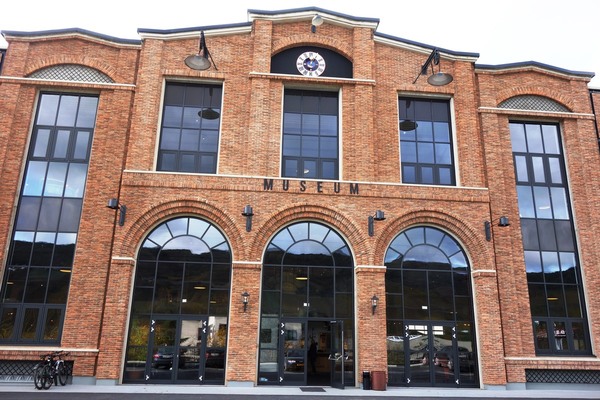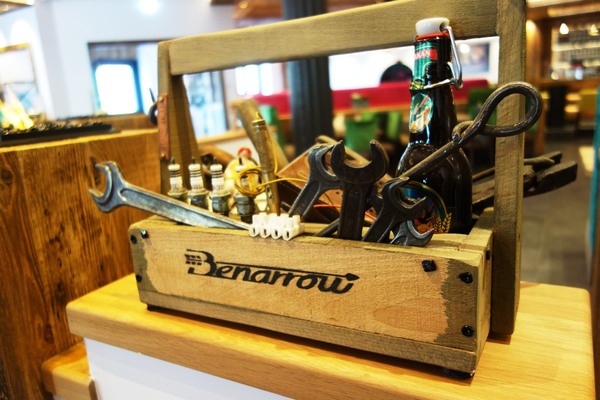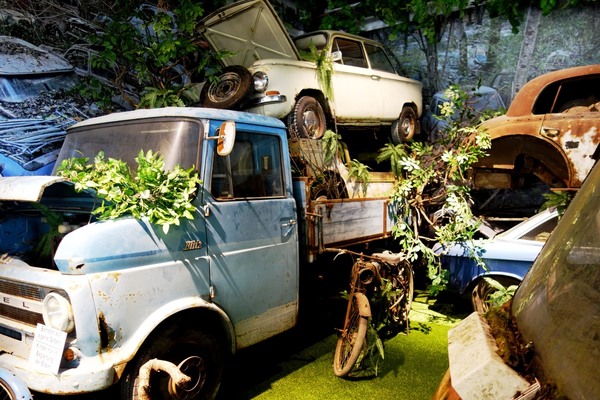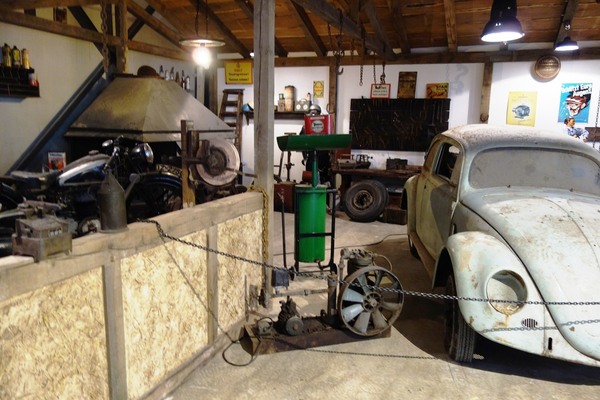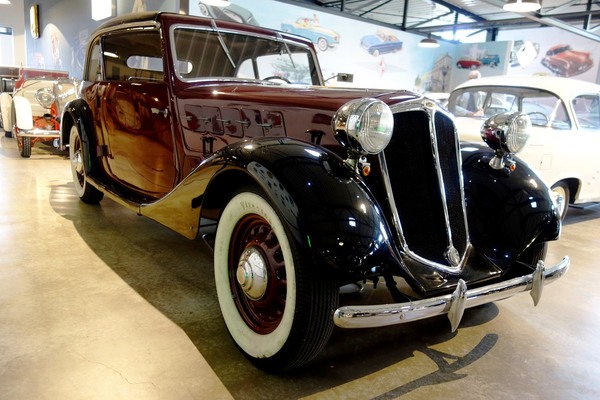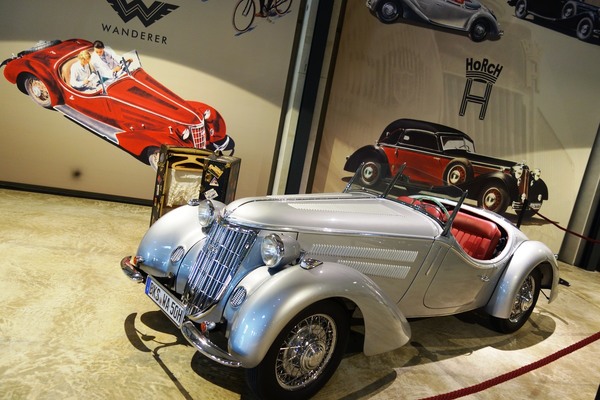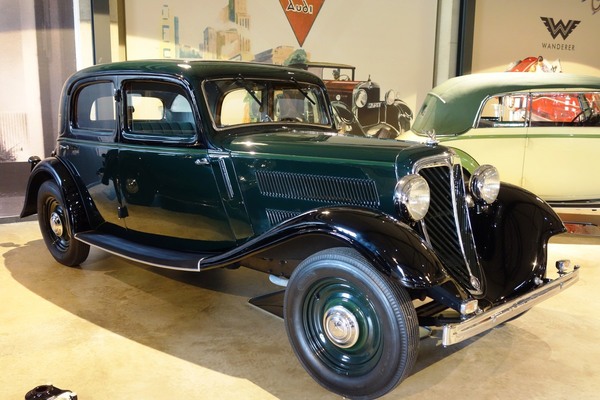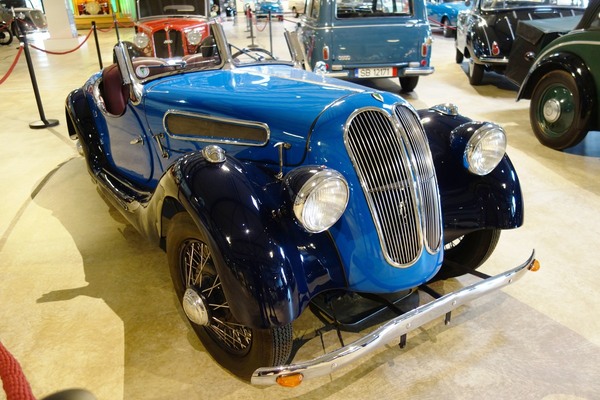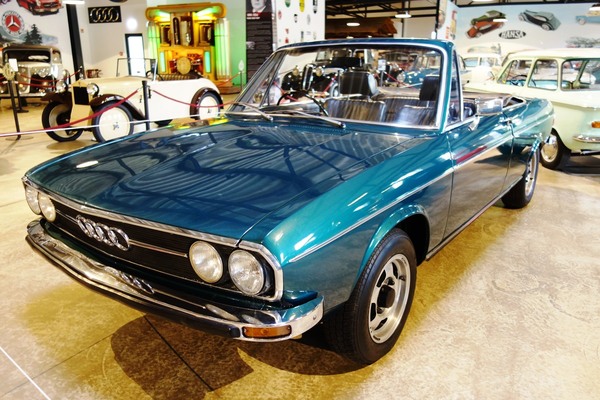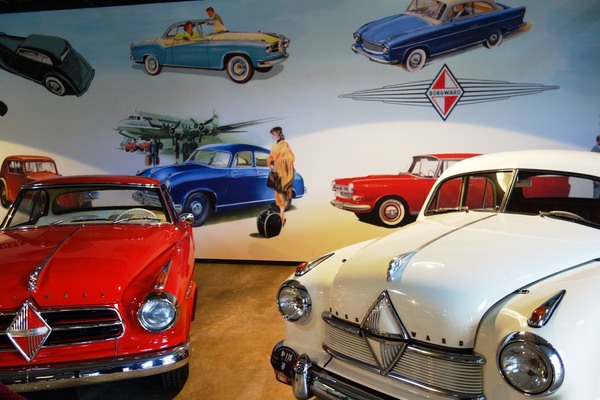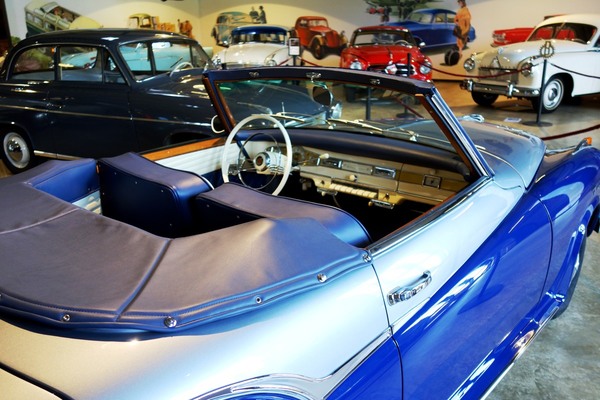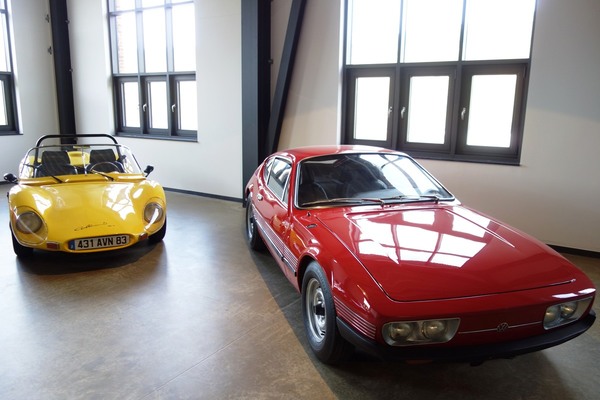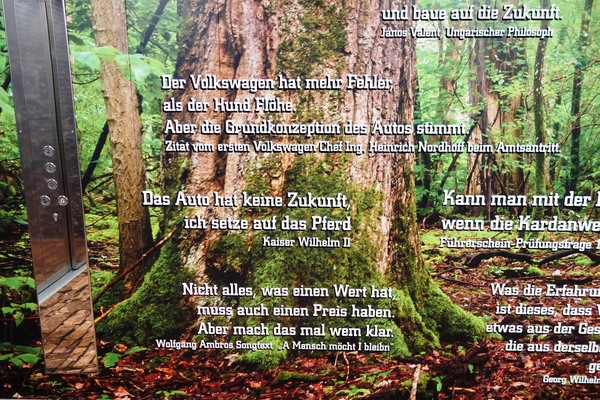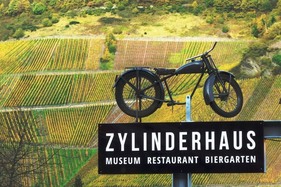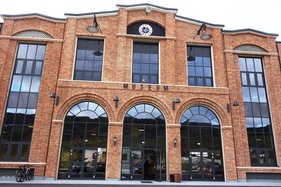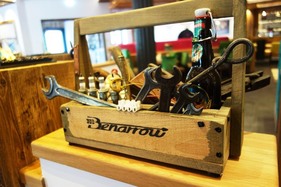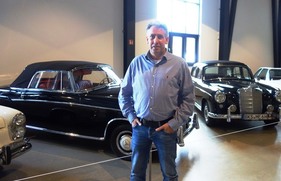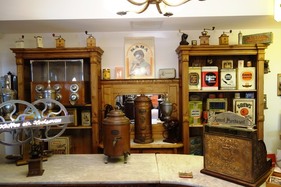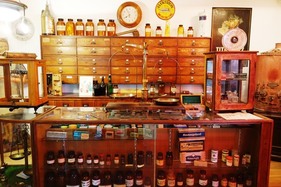The recently opened "Zylinderhaus" classic car museum in Bernkastel-Kues is amazing in more ways than one. It is surrounded by vineyards on the Moselle, away from the usual "car regions".
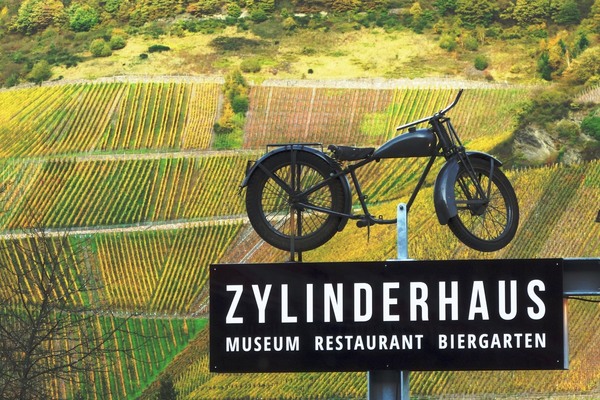
But there is no reason why a museum should not be located in this typical vacation region, as there is plenty of time to visit the museum during the vacations, especially as the "Zylinderhaus" also houses an original and spacious restaurant.
Ambiguous name
The name is also unusual. "It wasn't easy to find a suitable name for the museum that is also understandable in several languages," says the new museum director Martin van Stek. It fits, although the ambiguous word "top hat" doesn't just mean a headdress (if you take a closer look at the façade of the museum building, you can also spot pistons in a top hat).

Speaking of buildings: this is the next surprise. Friends of rolling cultural heritage are now used to admiring classic vehicles in former factory halls, airport buildings or roundhouse locomotives. And so at first you think you're looking at a former factory hall. But that is not the case. Museum founder Bernd Benninghoven - perhaps familiar to readers as the creator of the eight-cylinder "Benarrow" PB 5 sports coupé based on an Audi - has had a completely new building erected on the banks of the Moselle, which stylistically matches the classic exhibits.
Focus on German vehicles
The exhibition space covers 5000 square meters spread over three floors. There are currently 100 vehicles on display, with future exhibitions on changing automotive themes planned. The museum concept is also unusual: only vehicles of German provenance from the period between 1930 and 1980 are on display.
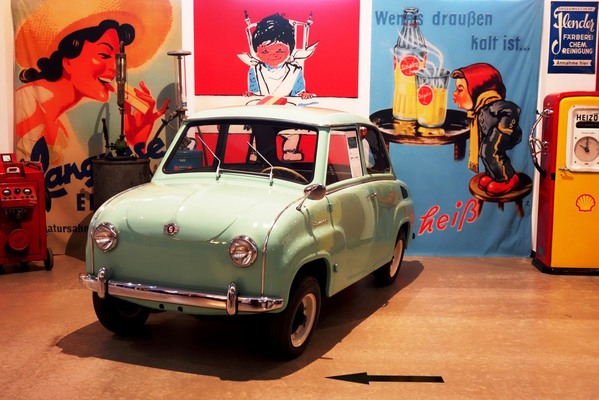
Cars from the Austrian company Steyr or the Brazilian SP2 only seem to be an exception. Of course, the visitor learns how these cars are also connected to Auto Union or Volkswagen. This is only logical, because: "Our aim is to show the historical automotive connections" (says museum director van Stek). The Zylinderhaus has succeeded in doing this.
Borgward and others
Although the museum also exhibits cars from Opel, Mercedes-Benz, NSU, BMW and Hanomag, the focus of the presentation is on vehicles from the Borgward Group and Auto Union.
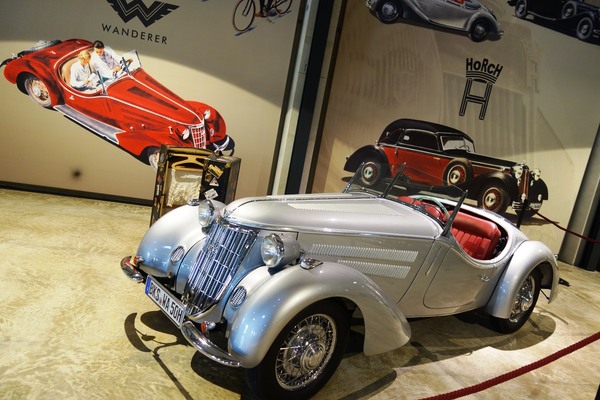
The former is remarkable because there is no major Borgward museum in its own right. And the presence of the Auto Union can be explained by the fact that a complete private Auto Union museum was taken over from the Netherlands. This alone means that there are some parallels with the August Horch Museum (Zwickau).
Invitation to take a tour
Let's start with a short tour of the "cylinder house". Among the numerous DKWs of all F series, the DKW F4 Roadster with bodywork by Ihle is worthy of note. Van Stek comments: "You can see that the BMW kidney grille already existed at DKW".
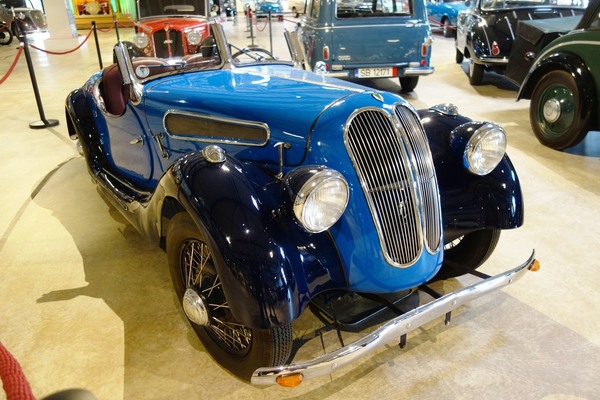
The reunion with the Audi 60 forerunner DKW F 102 from 1963, the last DKW model, and the DKW Junior is also a pleasure.
In addition to the DKW "Schwebeklasse" (1934), the rarely shown DKW Monza (1956 to 1959) is also worth mentioning. Depending on the source, a maximum of 240 examples of this plastic coupé were built. Worldwide, 50 are said to still exist.
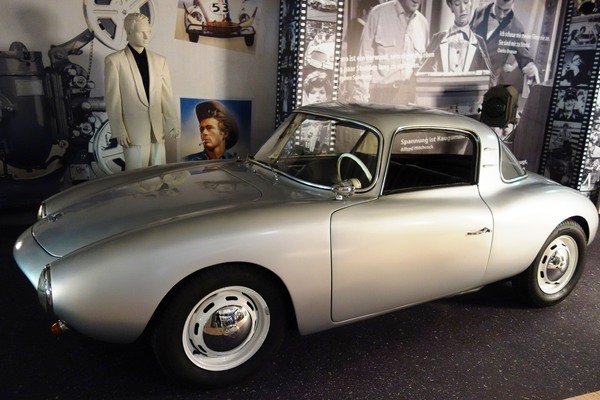
The middle and upper class vehicles of the 1930s are also impressive: for example, the mighty Horch 930 (1937/38) and the elegant Audi 225 Front convertible with a body by Gläser (1935), a particular gem of the museum. Also noteworthy are the Wanderer W 21 (1933 to 1936), which looks like a Mercedes 170 V, and the beautiful Borgward Hansa 1700, built from 1934 to 1939. Also on display is the rare Audi 100 convertible from the English company Crayford from 1973.

The BMW 321 manufactured after the end of the war in 1945(!) is probably a unique specimen. It was assembled by Russians from leftover stock, as evidenced by the type plate in Cyrillic script.
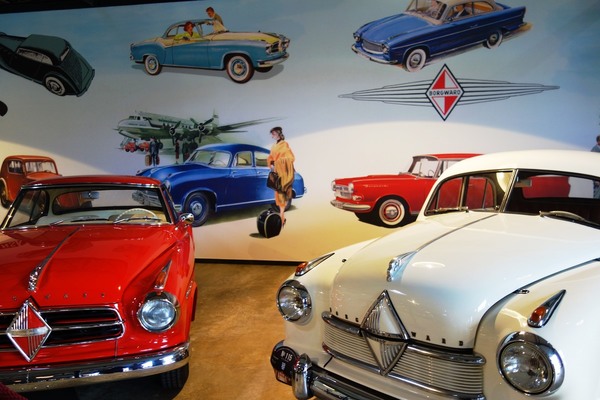
The presentation of vehicles from the Borgward Group ranges from the small Lloyd 400 to various post-war Hansas - including the first German car with a pontoon body, the Hansa 1500 - and the still beautifully shaped Isabella. The latter can also be seen as a convertible.
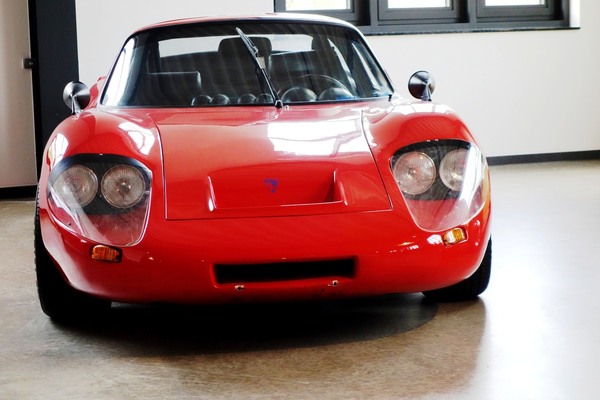
Let's end the tour with the Thurner RS, the gullwing coupé based on the NSU, of which just over 100 were built.
Ambience with a reference to the times
The ambience and details of the "cylinder house" are also impressive. "We also want to show the reference to the times," says museum director van Stek. To this end, the museum makes use of contemporary advertising in the background (remember the detergent expert "Klementine"?) and in particular the depiction of everyday life in the 1950s. The small cars of the economic miracle, Goggomobile and Prinz, are parked in a faithfully recreated shopping street with a petrol station, grocery store, pharmacy, radio and coffee shop. All garnished with original props.
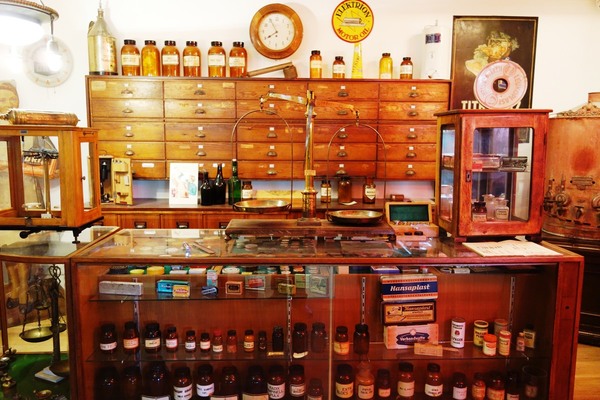
"The rest of the family will be interested too," smiles the museum director, who also wants to offer something for visitors and children.
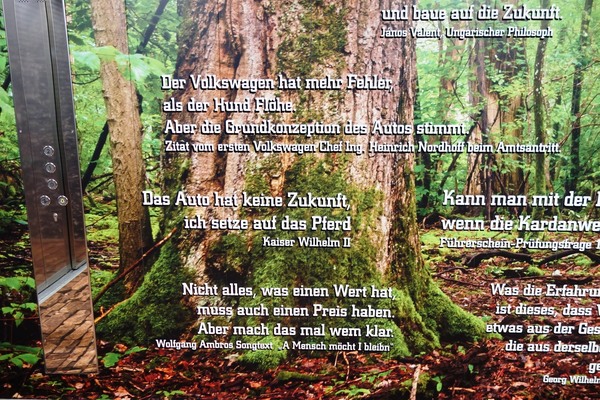
There are also original items in the elevator, namely a collection of quotes relating to the automobile. For example, the quote from Austrian singer-songwriter Wolfgang Ambros: "Not everything that has a value must also have a price". True, but unfortunately the market for classic cars does not follow this insight...
Multimedia
Information obelisks and the exhibits themselves provide in-depth information on automotive history; the "Zylinderhaus" can also be experienced using multimedia. Further texts can also be read directly from a smartphone using a QR code.
Further information
The Zylinderhaus can be found at Adolf-Kolping-Straße 2 in D-54470 Bernkastel-Kues. It is open from Tuesday to Saturday from 10 am to 6 pm; Sunday from 10 am to 5 pm. The entrance fee is €12.50. Children from 6 to 12 years pay €9 admission, under 6 years are free, groups of 10 or more pay €9 per person. Find out more on the museum's website.

